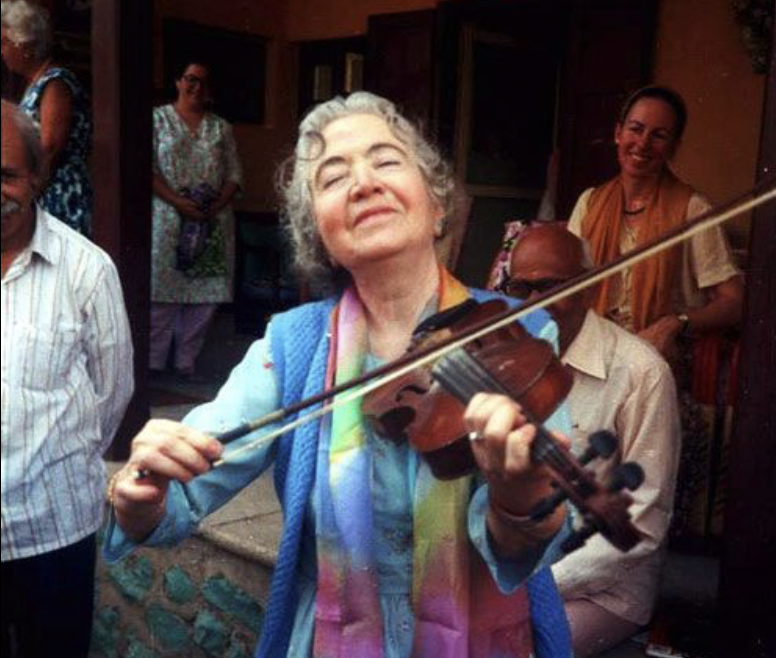
December 31, 2021
Dancing Together
In the winter of 1988, Beverly Smith asked Meher Center staff if she could call a square dance at the Center’s then-small New Year’s Eve program. They told her to wait while they asked Kitty Davy, one of Baba’s close Mandali who was then 97, whether she thought it was appropriate. “Yes,” she said, “As long as there’s no waltzing.” Beverly was told that she would have five minutes for the dance. And the seed was planted.
On December 31, after a stunning video of Baba was shown and a chorus of “Sat Chit Anand” was sung, Beverly stood alone on the stage of the Meeting Place, facing the community gathered there. She began playing a rousing tune, calling out moves and describing them so that even the most leaden-footed of beginners could follow. And they started dancing.
As the five minutes waned and Beverly looked down at that small group of community members swinging each other around, holding hands and letting go, she was hit with a powerful and unexpected feeling. “You hear about these healing circle dances and Sufi dances and things like that, where it’s more of a spiritual sort of idea, and I had never really thought about square dancing in that context. But when I saw everybody out there holding hands…these people had so much history, so much complicated history, and there they were just taking hands with each other, going on to the next, to ex-partners, businesspeople, everyone… I just could feel so much healing going on. And that is what dances are used for.”
The next year, Beverly was asked to do her dance again— and given slightly more than five minutes. The next year it got a little longer. Then, when Youth Sahavas began, she was also asked to call a dance at that event—the teens specifically requested it at the beginning of the week, as an icebreaker, so that everyone would start Sahavas feeling included and involved. And as participants graduated from Youth Sahavas, they began coming to New Year’s as a kind of reunion, for the dancing and the connection. And so the influx of teenagers and youth mingled with the crowd that had been coming for years, teens dancing with older adults dancing with young adults dancing with their children.
A few years later, after hundreds of people were coming to the Center for New Year’s and the dancing had gotten “really crowded and crazy and lovely,” Beverly got a call from the celebrated folk musician Jay Ungar asking her to do a gig with him on New Year’s Eve. She agonized over whether to take it, but finally decided that the Center could do without her that year and said yes. Almost instantly she pictured the Center square dance and knew she had made a mistake, but she couldn’t go back on a gig. The next morning, Jay called her out of the blue. “I just want to make sure—do you really want to do this?” he asked her. “No,” she said in relief. “No, I don’t.”
From then on, until just a few years ago, Beverly and her band came to the Center for New Year’s every year, calling dances from the Meeting Place stage. And she has always remembered what a privilege it is, not just a responsibility but a deep honor: to provide this yearly moment for the Baba community, of connection, of healing, of a fresh start together. Now Anna Lena Phillips Bell, another talented musician and caller, carries on the tradition with her.
Soon after the New Year’s Eve dances started at the Center, in February of 1991, Beverly found herself in Meherazad with a banjo player and a guitarist. They played for the women Mandali, and soon there was a vibrant square dance being called in front of Mehera’s porch, the women clapping along joyously and Mani even trying her hand at the fiddle. Then it was time to play for Eruch. Into the quiet of Mandali Hall, they started playing a traditional tune, over and over, like we hear every year at the Center as we swing each other around, young and old, dear friends or historic adversaries, as the old year closes and a new beginning approaches. The music rose up and up to the ceiling, repeating and repeating. As the last note died out, Eruch sat looking at them, his eyes half closed. He said, “It’s like repeating the name of God.”